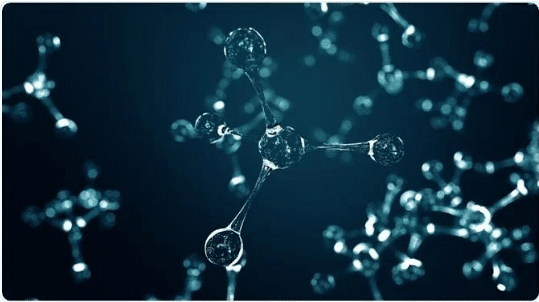Estrous cycle
- The estrous cycle is a cyclic ovarian period that allows the female reproductive system to be active to establish pregnancy after mating.
Medium picture of a cow and its calf standing next to each other
- The estrous cycle is a periodic cycle observed in mammals and is responsible for preparing the female body for pregnancy. The cycle starts after the mammals attain sexual maturity and last throughout life. The cycle occurs in non-primate female animals such as deer, cows, sheep, etc.
- The cycle typically lasts for 21 days, during which they are sexually receptive in the estrus stage of the cycle. Since the endometrium gets absorbed by the uterus walls, there is no bleeding during this period, when the conception does not occur. The estrous cycle consists of four phases: proestrus, estrus, metestrus, and diestrus.
- Although estrous and menstrual cycles are quite different, however have some similarities. These cycles occur in mammals; secondly, this period begins when they attain sexual maturity.
- Thirdly, the reproductive hormones compel the initiation of the cycles. Fourthly, the mammals can reproduce multiple times during both cycles, and finally, their crucial role is to prepare the female mammal for their pregnancy.
Four stages of estrous cycle
Proestrus
- The proestrus stage involves regression of corpus luteum (CL), which is a structure formed after the release of an egg from the ovary. Here, the estradiol concentrations rise, increasing luteinizing hormone (LH) and stimulating follicle hormone (FSH) levels.
- When FSH reaches its peak, the estradiol steeply declines, causing ovulation and the beginning of the estrus phase. LH is produced from the pituitary gland and has a key role in determining sexual maturity and functioning. This hormone helps to regulate the menstrual cycle, initiating ovulation.
- FSH levels are associated with secondary follicular growth and development while controlling ovarian functions.
Phases of the estrous cycle
Estrus
- Proestrus and estrus phases encompass into follicular phase. During this stage, the estrogen levels are high, and the behavioral changes in the non-primate mammals are observed to induce heat. This increases their receptivity and readiness to mate with males. The endometrium thickens before ovulation, preparing the uterus to detain fertilised ova.
- The genital area is observed to be swollen. Males mates with females by the smell of their heat, where pheromones are released during this phase.
Metestrus
- Metestrus happens only when there is no conception. The CL function decreases without conception in this stage, and the reproductive activities gradually decline. The CL is developed after releasing the ovum due to the influence of LH and then regresses. The progesterone levels are observed to have increased.
Diestrus
- Metestrus and diestrus encompass the luteal phase. In this stage, the progesterone levels increase rapidly and fall steeply, followed by the initiation of proestrus by a sudden increase in estradiol levels. Here the CL is regressed and enters into a resting period during the mating season.
- Therefore the females become sexually unreceptive to males. The duration of the estrous cycle varies for different species. Anaestrus is a stage when the cows’ reproductive activities are in an inactive state.
Comparison between Estrous and Menstrual cycle
- The estrous cycle occurs to prepare the female body for childbirth, whereas the menstrual cycle is involved in developing the female uterus.
- The menstrual cycle is observed in primates (such as humans, apes, etc.), while estrous cycles are in non-primates (such as cows, sheep, etc.). Therefore, the former cycle is very complex as compared to the latter. This is due to the menstrual cycle having proliferative, secretory, and menstrual phases that are not found in the estrous cycle.
- Sexual receptivity is a female behavior induced by reproductive hormones aiding males to fertilise the eggs for reproduction. This sexual receptivity is maintained throughout the menstrual cycle compared to receptivity lasting only during the estrous cycle.
Outline of a pregnant woman standing at night
- The endometrium (a thin tissue lining in the uterus) is shed and discharged as mucous with blood during the menstrual cycle. Whereas the uterus absorbs the endometrium during the estrous cycle, hence there is no shedding of blood. This shedding of the endometrium for both the cycles occurs when three is no fertilisation of an egg by the male sperm.
- Both periodic cycles have four phases. The menstrual cycle consists of proliferative, ovulatory, secretory, and menstrual phases that last for approximately 28 days. The estrous cycle contains proestrus, estrus, metestrus, and diestrus phases, generally staying for around 21 days.
- However, the menstrual cycle terminates about 45-50 years, known as menopause, while the estrous cycle persists throughout the mammal’s life.
- Understanding the estrous cycle of non-primate mammals will help the producers point out any challenges in reproduction, especially in cows and heifers. This knowledge can assist in controlling the reproduction and regulating the drug administration.
internal links:
Reproduction in Plants and Animals-Erakina
Reproduction of Homogametes-Erakina
22/04/2022
Tags:
lifescienceOther Articles
Next
April 28, 2022
Reproduction in Plants and Animals-Erakina
Previous
April 27, 2022







